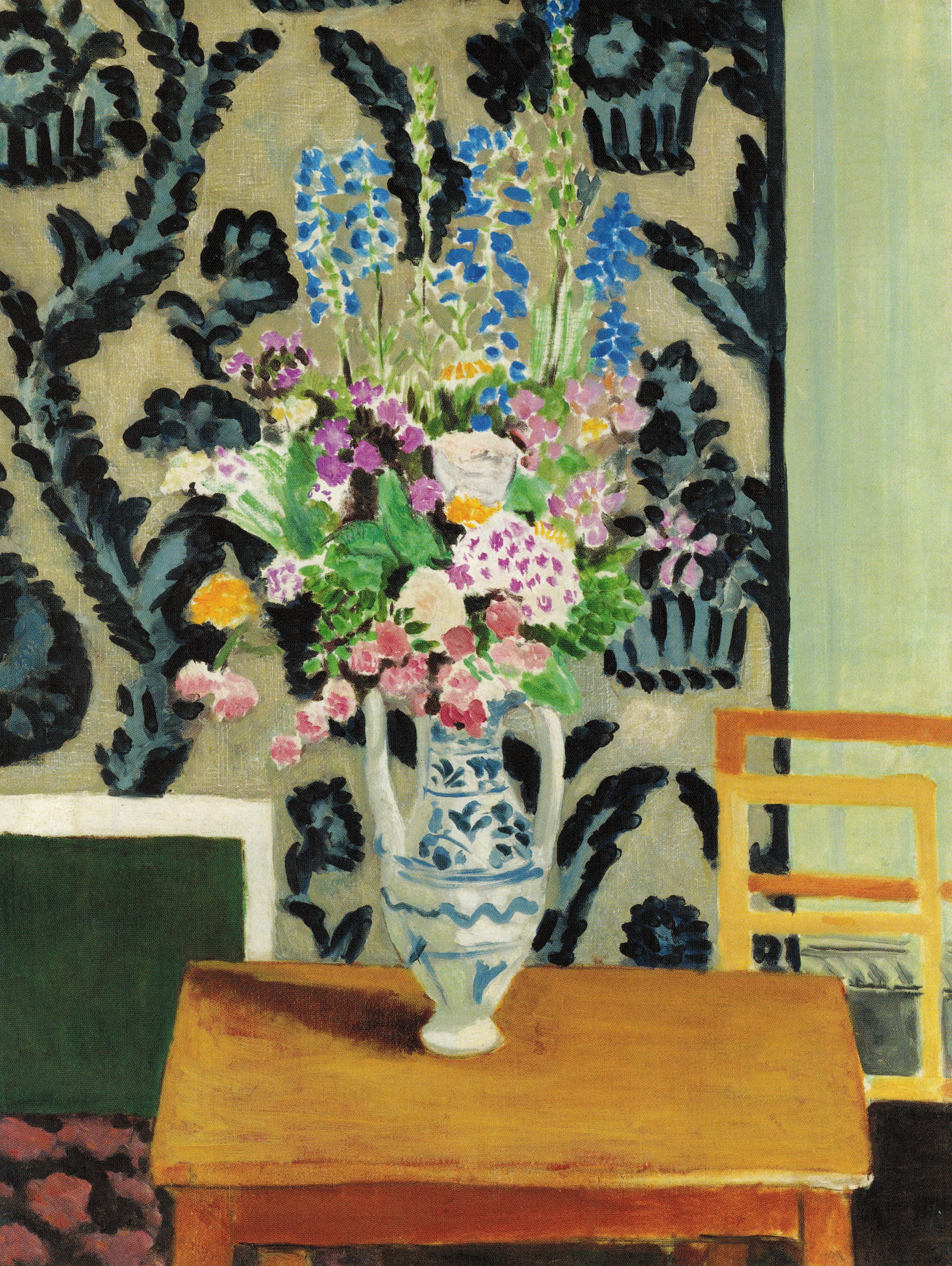One way art can change a world

Matisse, Bouquet de fleurs pour le Quatorze Juillet, 1919
I’ve been having a conversation with Jennifer Wenker, the director of the Herndon Gallery at Antioch College, in which we have been touching on the role of art in human life. She has a show up now, Image: The Public Face, that relates to her deep interest in how art can promote social justice. It’s part of the FotoFocus Biennial in Cincinnati, an area-wide exploration with dozens of institutional participants that examines how photography does and doesn’t document reality and truth, and it has a postmodern twist of calling into question even the basic notions of reality and truth themselves. A central theme of the show is how photography has given power and a voice to people who otherwise wouldn’t have much of either–flattening the hierarchy that once put the painter in control of another person’s self-image and gave the privilege of a portrait to only the rich, powerful, and privileged. The spread of photography first through the invention of the Kodak camera and now through the popularity of the smart phone has thus become a force for social justice.
I’ve known and respected Jennifer for many years now. I participated in one of her art projects by tossing seeds into the wind down in the Finger Lakes, a memorable moment for me. (I like describing it that way because it sounds like a randomly beautiful thing to do, though the project actually had a hidden agenda involving birds. I must admit the fact that it had this agenda made it a great art project.) I both admire what the gallery is doing with this show and am intrigued by the questions it raises. Yet, in this conversation we’ve been having about the show, I also feel a slightly contrarian itch, as is my wont, to push back against the appropriation of art for any purpose, including social change. It isn’t that I think it’s wrong-headed. It’s simply that I’m most interested in art that works in unanticipated ways that are as fundamentally unpredictable and rich as the impact of one human being on another. I feel this itch, not because I am against social change, but because I think that harnessing art to any conscious purpose is to diminish its most fertile and unpredictable potential. To create art to serve a particular purpose suppresses the way the human mind discovers what it needs to create within the process of creation. Art devoted to an effort to illuminate what’s wrong with the world is admirable, legitimate, and at this historical moment, it seems, of far more interest to visual art’s institutional arbiters than work pursuing strictly aesthetic ends. I have no gripe with that; who could argue with anything that helps make the world a better place? In fact, doesn’t most postmodern art have a critical edge, a sly smirk that calls into question how everything works in the contemporary world, as a way of freeing people from it? Isn’t that healthy, as long as skepticism doesn’t slide into cynicism?
Yet I envision differently how art changes people and therefore changes the world. While reading the New York Times Magazine this past weekend, I came across a paragraph that stuck me as the perfect distillation of my views on the role of art in life and how pure aesthetics can have just as powerful an effect on people as anything created explicitly as a tool for change. As a brief anecdote, it almost offers all the justification for art anyone would need, showing with lyric brevity how art can sustain and nourish the soul of someone who loves it.
The story was a first-person narrative from a young woman who had become addicted to Adderall, an amphetamine commonly used to treat ADHD. The description of it made it sound better to me than heroin, as well as a temporary cure for everything that ills my aging mind. I can imagine sinking into the use of that drug wholeheartedly for a few intensely, ecstatically productive years, ending in a long period of twitchy stasis and anomie. Her story talked about how steep a price she paid and how great it was to escape from the drug’s grip. Here are the sentences that, for me, are all but a manifesto for painting done for no other purpose than painting itself.
In the end, I did not get off Adderall alone. I had a brilliant psychiatrist. I believe she saved my life. On the wall of her office, she had a single image: a framed print of an Henri Matisse painting. Through our time together, Matisse came to stand for the creative process. You start one place, go through hell and wind up somewhere else, somewhere that surprises you.
In that last sentence she was talking about the creative process of becoming the person she wanted to become and how art helped her get there. But it’s also a perfect description of the act of painting as well. If you already know what you’re hoping to convey, in a painting, or in your life, then it isn’t going to hold any of the most fertile sort of surprises for you when you’re done. (It will be surprising one way or another, but not in the best way.) Finishing a painting should be like unwrapping a gift you feel you don’t quite deserve when you finally see it and couldn’t have clearly imagined ahead of time. If that’s how it came into the world, there’s a good chance others will feel that way about it too. And that for me is the whole point. Matisse, who as far as I can tell cared not a whit about social issues, helped change this woman’s world, and maybe he helped make the rest of her life possible.
Comments are currently closed.